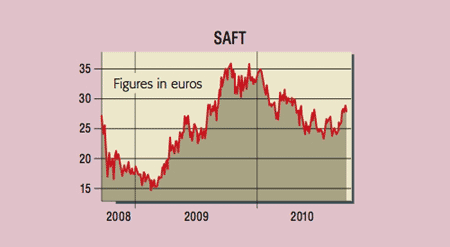
On Monday 6 September, a record 10% of Britain’s electricity came from wind power, equivalent to the output of four nuclear power stations. Industry bodies such as RenewableUK cheered the news – but sceptics noted that the 10% figure was only hit because the turbines were running at full tilt in windy conditions, while demand was lower than normal.
This sums up the problem with renewables – matching supply to demand. If the wind has to be blowing for the lights to come on, then clearly you can’t rely on that power source alone. But if you could store ‘surplus’ energy it would be a different matter. Not only would it allow energy to be saved for periods when demand is higher, but it also changes the economics of wind farms. If electricity produced during off-peak periods can be stored then sold during peak periods when prices are higher, it means better returns.
The good news is that ‘grid-scale’ power storage, as it’s known, is evolving rapidly. The most cost-effective form is pumped hydro storage, but you need the right geography – National Grid has a facility in Wales. Another, mostly experimental, technique is to use ‘spare’ electricity to pump compressed air into underground caverns, then release it again to drive turbines during peak times.
But for investors, the battery industry offers the most interesting opportunities. On the one hand, growing demand for lithium-ion batteries for electric cars is bringing manufacturing costs down. On the other, California is set to pass legislation by the end of this month, which will force utilities to set targets for installing renewable energy storage systems. These two factors could kick-start the entire industry.
Chinese car and battery group BYD Corp (part owned by Warren Buffett) has recently signed a deal to build a storage facility at a wind farm near Los Angeles. And A123 Systems, a lithium-ion battery maker, which listed last year, has spun out a specialist unit, 24M Technologies, to develop grid-scale storage. Last month it signed a deal to provide up to 44MW of capacity to utility AES Energy Storage. National Grid, which has extensive operations in North America, is testing zinc-flow batteries made by Premium Power and flywheel systems developed by Beacon Power. Beacon is expected to complete its first, full-scale 20MW plant in upstate New York late this year.
Special FREE report from MoneyWeek magazine: Don’t be fooled – house prices will fall again!
- Why UK property prices are set to collapse by 30%
- When it will be time to get back in and buy up dirt cheap property
“We see energy storage as a key technology to help us manage the intermittency of renewables,” says Stan Blazewicz of National Grid. “Given the pace of development of renewables we need to see energy storage keep up”. Flywheel systems give quick, 15-minute bursts of power for when the wind suddenly drops, says Blazewicz, while zinc-flow batteries can provide power for much longer – up to 40 hours. “Zinc-bromide provides pretty good scale and has the potential to be low cost,” he adds.
Lithium-ion costs are also falling. French battery group Saft is building a huge 1GW lithium-ion facility in Florida, with help from US federal funding. “We’re focusing more and more on lithium-ion because we believe it’s more flexible,”, says François Bouchon of Saft. And with new manufacturing capacity coming on line, costs are also likely to keep falling over the next couple of years, he adds. We look at the best way to invest in the sector below.
The stock to buy now
A market leader in industrial batteries, Saft (Paris: SAFT) manufactures everything from rechargeable batteries for trains to batteries for defence applications. The company, which has been making batteries for nearly 100 years, has recently launched two new business areas. The first of these is a joint venture with Johnson Controls to make lithium-ion batteries for hybrid and electric vehicles and the second is in renewable energy storage.
“If this legislation [in California] goes through then it’s going to give the industry a big boost and Saft is a key player,” says Clare Brook of socially responsible investment specialist WHEB Asset Management. “It’s not a cheap, cheap share, but it’s got tremendous growth prospects and has been slightly overlooked because it’s not deemed as racy as companies such as Ener1 or Advanced Battery Technologies,” she adds. Saft has a market cap of €738m and is trading at €29, with a dividend yield of 2.6% and p/e ratio of 16 for 2011. Broker Collins Stewart reckons that the current price fails to value the two new growth businesses – effectively, you’re getting the new battery businesses for free: “batteries not included”, as the saying goes. The broker has a price target of €37.
• Nick Hanna wrote The Green Investing Handbook . He has shares in Saft.
• This article was originally published in MoneyWeek magazine issue number 505 on 24 September 2010, and was available exclusively to magazine subscribers. To read more articles like this, ensure you don’t miss a thing, and get instant access to all our premium content, subscribe to MoneyWeek magazine now and get your first three issues free.